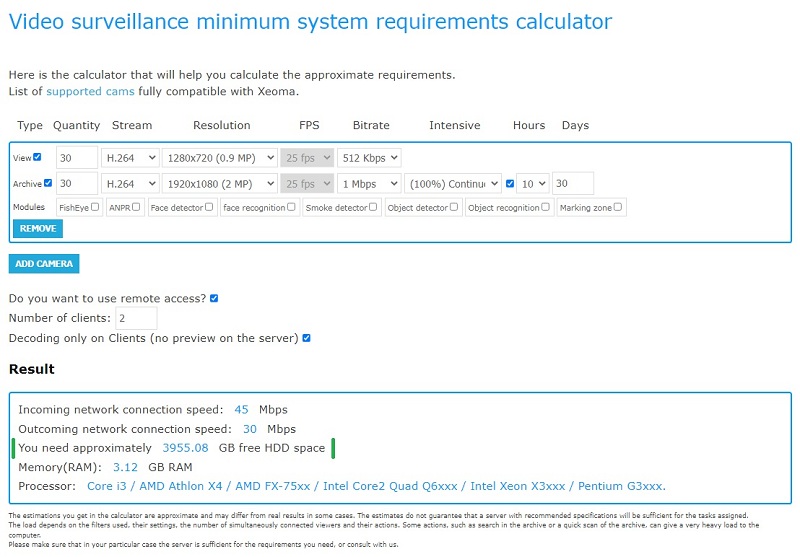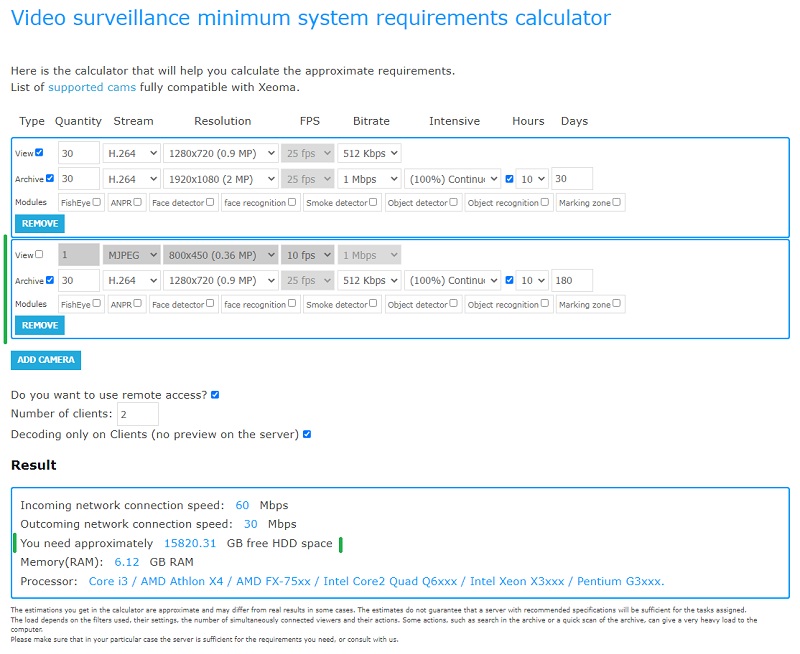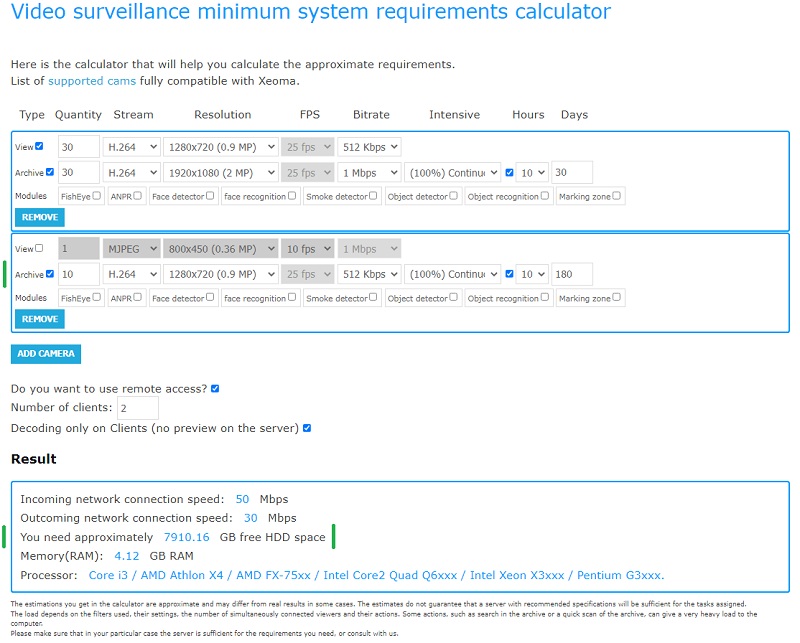Low quality archive space calculation
The new Xeoma beta version features a new feature to save a lower quality archive from a camera along with the regular archive written with the dual streaming. Details about the feature
Naturally such a complimentary archive would require additional disk space in addition to the regular archive. You can still use our online calculator to calculate the additional space required for the low quality archive.
Here is an example:
Say, we have 30 IP cameras with the dual streaming feature which means a lower quality stream can be used for live view, and a higher quality stream can be used for saving recordings.
Let’s suppose we will be using a stream with these parameters for view in the Multi-Camera Window: 0.9 MP resolution, 25 fps frame rate, H264 format, and 512 Kbps bit rate.
For recording sake, we can use a stream of 2 MP resolution, H264 format, 25 fps frame rate, 1 Mbps bit rate. This will be our main archives made within work hours that must be kept for 30 days in case they’re needed. After that time, recordings from the main archive are no longer need, but it would be nice to save lower quality recordings for 150 days more (180 days in total). It’s OK to have lower parameters for this archive that is the ones from the ‘Preview’ stream — 0.9 MP, 25 fps, H264, 512 Kbps.
First, let’s use the calculator as always to calculate the regular archive:

Among other hardware recommendations, we’ll see how much space is required for the high quality software. Now, let’s see how much space is required for the additional low quality archive. Let’s add a new section where we only use the archive part – but this time we use the lower quality stream:

As a result, the recommendations box now has updated information about disk space requirements – it accounts for both the main and low quality archives.
Sure, if needed, the low quality archive can be also stored for just a part of the cameras. In this case, set a number of cameras that will need the low quality archive in the second section:

This is how we can get full information about required disk space for when a low quality archive will be saved for all or a part of cameras parallel to the main, high quality archive recordings.